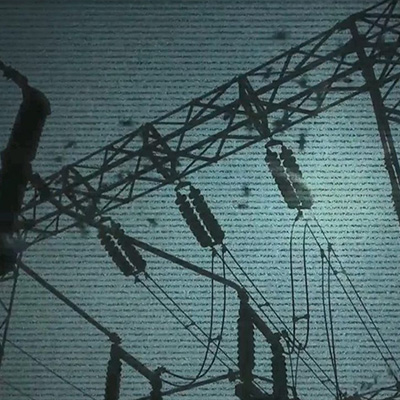Published On: Aug 20, 2015
Planning is one of the most important aspect of running a business efficiently. Planning can address gaps well in advance so that risks are managed and operations of the business are smooth. Conventional utility planning generally includes load forecasting programs for energy and capacity resources, consideration of socio-economic costs, analysis of uncertainties and risks due to internal as well as external factors. However, there is still limited or no effective planning from the perspective of Power Quality (PQ) and Energy Efficiency (EE) improvement in Indian utilities. With the ever increasing energy consumption, there is a need for a holistic method like Least Cost Planning (LCP) that can identify the least expensive options for providing a finite amount of electricity to end customers.
This blog attempts to explain how improving PQ & EE in the planning stage by utilities can optimize their costs and investments.
WHAT IS LCP AND HOW IT IS HELPFUL TO UTILITIES?
The concept of LCP originated in 1970’s as part of the energy debate in countries like USA and was motivated to promote the ‘proper and efficient’ use of energy through consideration of more competitive supply and demand-side options. At its core, LCP is about comparative analysis and cost effectiveness of investment alternatives. A basic LCP procedure is to identify capacity options to meet expected requirements, identifying demand side initiatives and selecting the cost minimizing combination of the two sets of options.
The essence of least cost planning is that in some circumstances it is more profitable for a distribution utility to encourage its customers to use less electric power than it is for the utility to sell a larger quantity. The two parameters that defines the circumstances when this may occur are the tariff at which the utility can sell its electricity and the cost of investing in new or additional infrastructure setup to meet growing demand, as compared to the cost of conservation (energy efficient) measures. Capital investment for each and every addition in the infrastructure set up is practically difficult to achieve, to meet the ever increasing demand of electricity, and at the same time tariffs charged by utilities are also regulated (external factors further limit the extent to which it can be increased) and hence the premise is that, if is often effective for utilities to invest in end-user efficiency than it is to meet expanding demand. Thus, utilities can service more end-customers without increase in energy quantity. This prioritizes the concept of providing energy services to the end consumers over provision of energy in quantities. The distinctive feature of least cost planning is not that it shows that energy efficiency is good; it is that it measures whether or not efficiency is profitable for a specific utility.
ROLE AND IMPORTANCE OF POWER QUALITY FROM LCP PERSPECTIVE
Power Quality (PQ) plays a significant role in efficient power delivery and its utilization. It refers to the stability and consistency of the electricity supply. Any deviation of voltage and current waveforms from the ideal is termed as PQ disturbance and it leads to huge damages including additional investments at both the utility and the customers end. As we connect more and more electronic devices to the electrical network systems, the quality of power supply becomes increasingly important. Various PQ issues like frequent interruptions, voltage unbalance, harmonics, flicker, etc. occurs due to poor PQ and have operational as well as financial impacts on utilities. These lead to high running costs, failures of equipment, suboptimal capacity utilization, etc. which further aggravate economic problems for the utilities. Some of the key devices used by utilities to mitigate PQ issues are,
Effects on Cables
Harmonic currents has two main effects on cables:
- Dynamic Voltage Restorer: is used for the protection of sensitive loads from voltage sags and swells and improves the voltage stability
- D-Statcom: is one of the prominent device used for power factor correction, harmonic mitigation. It compensates the reactive power, which is one of the main cause of increasing losses and various PQ issues
- Unified Power Quality Compensator, Automatic Power Factor Controller (APFC) Panel, Static VAR compensators, etc: all are some of the modern day solutions used in addressing PQ issues
Also, it is extremely important to consider Measurement & Verification (M&V) at all level of the systems to minimize and identify PQ issues before they occur. Power Quality improvement requires utilities to have a relook at their strategies for making appropriate investments in the network to increase load capacity, extend electrical equipment life and reduce technical loss.
While these solutions come with benefits, there investments are also higher which add up to the utilities total cost. Hence, most utilities in their aim of reducing immediate costs to supply electricity, do not plan for sufficient PQ diagnostics and improvement equipment. Also, PQ disturbances have significant financial consequences for utilities as well as end-users and many a times these costs are not planned and arise only when there are major issues. PQ is also interrelated with the key strategic areas of the power distribution systems and it can be differentiator for tomorrow’s utility business model which has been in detail covered in our previous blog on De-Mystifying PQ: Interrelation with Power Supply Reliability, AT&C losses, Energy Efficiency.
NEED FOR USING LCP BY INDIAN ELECTRIC UTILITIES
Power sector in India is engulfed in many crises viz. capital investment, high AT&C losses, poor & old infrastructure, etc. increasing the demand and supply gap to rise considerably. With the continuous rising share in dominant non-linear load based consumption of different customer categories, it is becoming increasingly difficult for distribution utilities in the country to satisfy and improve customer service and at the same time remain financially viable. Further, due to poor power quality and reliability of supply, technical performance of SEBs also leaves much to be desired. Addressing these shortcomings has proved to be challenging, resulting in cost and time over-runs of policy interventions.
Various State Regulatory bodies and regulated distribution utilities need to also focus on improving the efficiency of the end user systems in order to improve the overall efficiency of power distribution network. Implementing Energy Efficiency measures at the customers’ end decreases the overall energy demand and also peak demand, leading to higher reliability of supply. It also means that utilities can meet increased demand using same or (as required) buying less input energy. Under a least cost planning approach, the demand for electric utilities’ services is no longer taken as a given, to which they simply respond. Rather, utilities’ are expected to integrate into their approach a more sophisticated analysis of demand and of their customers’ behaviour, and also of end-user technologies. The immediate attraction of the concept of least cost planning is that it links energy efficiency to profit and loss economics of the utilities.
From an environmental perspective, a decrease in energy demand due to improved efficiency reduces the environmental impact of energy consumption associated with a particular level of production or other activity. In this respect, promoting energy efficiency can thus enhance the public image of a utility company. Among the range of technology options that exist to provide energy service, EE approaches are the most cost competitive.
For Reference: Read more on “The Future of Utility Customer – Funded Energy Efficiency Programs in the United States: Projected Spending and Savings to 2025” Point of Supply Generation
CONCLUSION
The electricity industry is essential for social & economic development and plays an important role in the development of an economy. The industry is already facing unprecedented challenges and growing financial constraints to build new power systems. Hence, there is a need for more efficient use of existing network facilities, rather than building new ones as the need for transfer capacity in power systems increases.
LCP method considers an array of energy resources, more than any other traditional method does, such as end-users efficiency investments, load management by utilities, alternating pricing options and various other beneficial factors. LCP as a planning and regulatory process can reduce the uncertainties and risks faced by utilities. As LCP, the quantity of power that utilities sell becomes less important than the quality of energy services delivered to end consumers and the ultimate figure at the bottom of the balance sheet.
REFERENCES
- Least Cost Planning: Should Utilities Invest in Energy Efficiency Rather Than in New Supplies? Ann Davison, Oxford Institute for Energy Studies, 1991
- Least Cost Planning in the Utility sector- Progress and Challenges
- Least Cost Planning Principles, Applications and Issues – USAID-SARI/Energy Program, October 2003
- Same Energy, More Power – Accelerating EE in Asia – ADB







